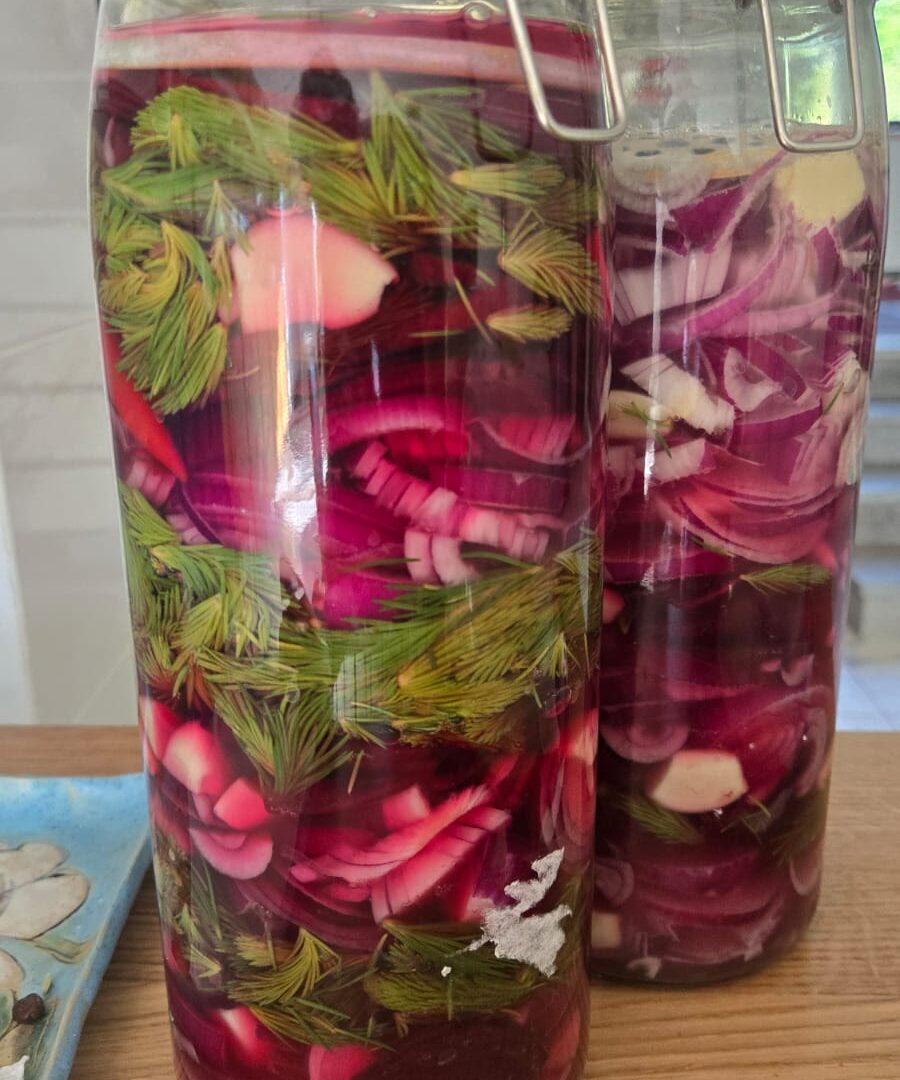Fermentation isn’t just a way to preserve food — it’s a natural, health-boosting, and flavor-enhancing process. While our ancestors mastered it without labs or measuring spoons, modern science is now able to explain and even quantify the benefits they instinctively knew. Find out how Fermented Vegetables can benefit you!
Why is fermented food good for you?
Naturally fermented vegetables (also known as lacto-fermented or wild-fermented) are rich in live lactic acid bacteria — known as probiotics — that support digestion and strengthen the immune system. The good bacteria in your gut also benefit from prebiotics, plant-based fibers found in vegetables that help those microbes grow and thrive.
Probiotics – The Good Bacteria Inside Us
Probiotics are beneficial microorganisms that live in our digestive system and help to:
- Balance digestion
- Support immune function
- Reduce inflammation
- Improve mood and mental clarity
Prebiotics – Food for Your Good Bacteria
Prebiotics are fibers and compounds found in plants that feed probiotics. Fermented vegetables often offer the best of both worlds: probiotics (the live cultures) and prebiotics (the fibers they feed on).
A Mirror of Digestion: What Happens in the Fermented Vegetables Jar Happens in You
Fermentation in a jar closely mimics the digestive process in your gut. Just as lactic acid bacteria break down sugars and fibers in vegetables during fermentation, similar bacteria work on the food in your intestines. In both cases, beneficial by-products — like lactic acid — are created, helping maintain a healthy microbial balance and keeping harmful organisms in check. By eating fermented foods, you directly support your gut microbiome, essentially “outsourcing” some digestive work before the food even reaches your stomach.
What to Ferment? More Options Than You Think
You can ferment almost anything — crunchy, juicy, leafy or rooty. We’ve even experimented with plums, and while they became soft and super tangy with a natural fizz, they ended up tasting like an unusual cross between compote and kombucha.
Our all-time favorite? Jerusalem artichoke (sunchoke) – it stays crunchy, has a nutty-sweet flavor, and ferments beautifully. We also love fermented garlic cloves with chili — spicy, mild, and delightfully crisp. The sharp bite of garlic softens while its health benefits intensify — a true win-win. Classic go-tos include carrot, cauliflower, and broccoli, which not only ferment well but create beautiful, colorful jars that taste as good as they look.
Beets and Purple Veggies: Antioxidant Powerhouses
Beets and other purple-hued vegetables — like red cabbage, black radish, and purple carrots — are nutritional powerhouses. Their vibrant color comes from anthocyanins, potent antioxidants with anti-inflammatory and cell-protective effects. Beets also contain natural nitrates, which support circulation and may help lower blood pressure by improving vessel elasticity. Thanks to betaine, beets also aid liver detoxification, while their high fiber content supports gut health. Rich in vitamin C, potassium, and iron, purple veggies may improve memory, boost immunity, and balance blood sugar. A regular dose of purple on your plate can slow aging, reduce chronic disease risk, and energize your body from the inside out.
Get Creative with Flavor when Fermenting vegetables
For a bold and unique taste, try fermenting wild garlic — either on its own or with other veggies. You can also enhance any jar by adding flavorful extras like spruce tips, blackcurrant leaves, dill stems, bay leaf, or garlic slices. These little touches bring surprising depth and turn every batch into a signature creation. In truth, you can ferment almost anything: vegetables, fruits, leafy greens, shoots, stalks — let your curiosity lead the way.
Step-by-Step: How to Ferment Vegetables at Home
Want to try it yourself? It’s simpler than it sounds — all you need is some fresh produce, salt, water, a clean jar, and a bit of patience.
- Prep your veggies – Wash and clean them thoroughly. Slice, shred, or cube as you prefer.
- Weigh and salt – Weigh your prepared veggies and add 2% of their weight in salt (e.g. 1000g vegetables = 20g salt).
- Pack the jar – Firmly press the veggies into a clean jar. They should be completely submerged in their own brine or added saltwater. We use clay fermentation weights and IKEA-style clamp jars with rubber seals.
- Release the pressure daily – Store the jar at room temperature and “burp” it once a day to let fermentation gas escape (not necessary if you use a special airlock jar).
- Taste and watch the transformation – You’ll notice a flavor shift within a few days. Around 3 weeks is ideal for a fully developed tang and rich probiotic content.
- Slow it down – When you’re happy with the taste, move the jar to the fridge. The cold slows fermentation, locking in flavor and preserving freshness.
Shelf life: Depending on the ingredients and cleanliness, fermented veggies can last 6–8 months or longer when stored properly in the fridge.
One Jar, Many Benefits
Fermentation is a beautiful fusion of ancient wisdom, modern science, and everyday flavor. It strengthens gut health, boosts immunity, and turns simple vegetables into nutrient-dense, living food. Every jar is more than a preservation method — it’s a miniature health factory, bubbling with life and flavor. And beyond the wellness benefits, fermentation offers creativity, satisfaction, and a touch of alchemy in your kitchen. Whether you prefer crisp sunchoke, spicy garlic, or a classic pickle, there’s a fermented favorite waiting for everyone.
Don’t throw away the brine!
The liquid left over from fermentation — the brine in which the vegetables fermented — is packed with beneficial compounds. It’s pleasantly salty and tangy, and just like the veggies, it’s full of good-for-you bacteria. Use it as a health-boosting shot, stir it into pasta sauce, or add a splash to your salad dressing for extra flavor and nutrition.
If you’re feeling unsure and would like to try it out for the first time with a helping hand, book a fermentation workshop with us — we’ll walk through every step together!
Farm Bread Workshop